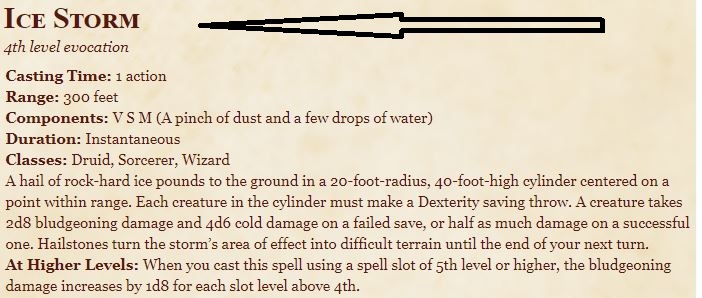Curiously, its capacity was decreased not by putting confinements on what sort of wishes the caster could make, but by hitting the caster with exhaustion that persevered after the spell’s throwing.
Deserving of note additionally, is that the spell message presently gave arbitrators a specific measure of direction as to how to settle the spell, notwithstanding venturing to such an extreme as to urge the DM to “keep up diversion balance” by at a slant deciphering player wishes.
Spell Spotlight: Wish 5e
The Wish spell is an increasingly powerful form of a Limited Wish. In the event that it is utilized to modify reality concerning hit focuses supported by a gathering, to breath life into a dead character, or to escape from a troublesome circumstance by lifting the spell caster (and his or her gathering) starting with one spot then onto the next, it won’t cause the enchantment client any inability.
dissimilar type of wishes, notwithstanding, will make the spellcaster be feeble (– 3 on quality) and expect 2 to 8 days of bed rest because of the anxieties the desire places upon a time, space, and his or her remains.
Notwithstanding what is wanted, the precise phrasing of the Wish spell is probably going to be helped through. (This optional intensity of the arbitrator is essential so as to keep up amusement balance. when wishing another character dead would be offensively uncalled for, for instance, your DM may well propel the spell caster to a future period where the item is never again alive, for example putting the wishing character out of the conflict.)
Propelled Dungeons and Dragons Edition
The renditions of wish and restricted wish in AD&D second release are much equivalent to they were in the first version. The content is practically indistinguishable, truth be told! It’s one noteworthy dissimilarity from the desire as exhibited in 1e is a changeless expense to the caster! Throwing a desire spell ages the caster five times.
The major event of wish requiring an expense past basically ninth elements spell opening to transmit. This thought would be grown further in the third release. Talking about which…
Mediating Player Wishes
All through the ages, the wish has exhorted Dungeon Masters to be shrewd with their elucidations of player wishes. This is in the beam of current circumstances; enabling players to wish without restriction is basically the default end of a round of D&D.
Any individual who can’t wish would then basically be an inferior character, and you would be in an ideal situation moving to a recreation framework like illustrious, where everybody has mystic power.
The confinements put upon the spell help improve this, obviously, however enabling the DM to translate player wishes how they will is, first, with regards to our legends of cheat genies and double-edged wishes, and additionally enables DMs to keep up a similarity to authority over their conflict.
In the event that I could just give one suggestion in regards to wishing, I would state: dependably be liberal to players that are happy to be liberal to you. On the off chance that the wizards and alchemists in your amusement are utilizing wish to upgrade your battle, let their desires work to everybody’s advantage. In any case, the back is likewise valid.
Never be liberal to players that are reluctant to be liberal to you. On the off chance that those reality changing dastards need to unleash ruin with your crusade—and it’s creation the amusement less diversion for you—let your inward swindler god thrive and curve those desires any way you see fit.
Obviously, in the last situation, you would most likely be in an ideal situation having a straight to the point, abnormal discussion with your players than endeavouring to torment them in-character. Working things out works much superior to getting down to business, in my experience.
On the off chance that you need solid guidance on overseeing wish, I profoundly prescribe tuning in to Todd Kenreck’s Todd Talk regarding the matter; it’s implanted at the highest point of this article. Past that, I have three suggestions for DMs attempting to understand wish.
The Law of Equivalent Exchange
To cite Fullmetal Alchemist, “On the off chance that one wishes to get something, something of equivalent esteem must be given.” The content of wish guarantees something comparable. “[The] more prominent the desire, the more noteworthy the probability that something turns out badly.”
Apparently, this rule given in the content of the desired spell is only a rule to enable you to curve your players’ words to make a twofold edged wish. This works splendidly well. Nonetheless, envision if throwing wish truly required a penance or something to that effect.
Do you know what the caster would trade so as to see their vision satisfied? When you’ve chosen, remember this while deciding the result of the desire, and keep the genuine outcomes of the caster’s activities in your back pocket to uncover when all is good and well.
Then again, you could propose this inquiry to the caster straightforwardly. Possibly a divine force of destiny addresses the caster right now the desire is spoken, and the character must pick their penance in advance.
To spare a friend or family member’s life, another adored one must pass on. Who will take the deadly blow? Presently, the decision is altogether in the caster’s hands. Presently, the throwing of a desire is something beyond a spell or a story beat, however a potential moral issue.
Make it Worth It
Winning the ability to cast wish is no basic accomplishment. It is genuinely the capstone of a wizard’s capacity and an accomplishment in its own right.
Give the wizard a chance to have some good times with their extraordinary infinite power for a bit, inasmuch as it doesn’t demolish any other person’s enjoyable. From a wicked perspective, this is likewise to your advantage. Let the caster get open to making little wishes with just minor results. At that point, when they become sufficiently presumptuous to attempt and in a general sense rework reality, surprise them!

